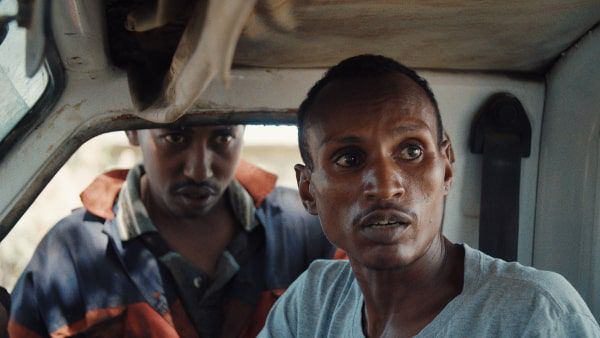Eye For Film >> Movies >> When Lambs Become Lions (2018) Film Review
When Lambs Become Lions
Reviewed by: Amber Wilkinson

Nothing happens in isolation – but sometimes it’s easy to forget that. There have been many documentaries about the evils of the poaching of elephants, with recent additions including The Ivory Game and White Gold. The focus has tended to be on the efforts of rangers and conservationists to thwart the poachers – but what about the other side of the coin?
Director Jon Kasbe focuses on the situation in Kenya from the perspective of an ivory broker ‘X’ and his poaching partner Lukas, while also offering the perspective of X’s younger cousin Asan, who also happens to be working as a ranger. Offering a clear-sighted view of the situation that calls to mind executive producer Matthew Heinemann’s approach to the drug trade in Cartel Land, Kasbe digs at the complexity of the poaching problem.

“Out here we’re all hunters. The poachers are killing the elephants and we are killing the poachers,” says a ranger. But can anyone truly win if the law of the jungle rules? Kasbe, who shot the film over three years, achieves an immense level of trust with the men he follows. His camera watches as X and Lukas prepare the poison needed to tip arrows to kill the elephants but also considers the pressure that Asan finds himself under with his pay packet months overdue and the only arrival date scheduled that of his baby. While not shying away from the horror of the trade, he builds a picture of what motivates the poachers, showing how its much easier to be moralistic from afar.
Kenya’s president Uhuru Kenyatta is happy to create a piece of theatre, watching over the stacking of £100 million of ivory that is turned into an inferno for the cameras. Kasbe nudges us to remember the importance of food on the table - for all Kenyatta’s show of might, wouldn’t a better situation be kindled by simply paying people what they’re owed? The director chiefly works as his own cinematographer, presumably further enhancing the intimacy of the relationships he developed, and he shows a keen eye for a striking image, whether involving man or animal – from smoke curling round a beetle to a ranger offering a curious giraffe a raised hand of greeting. More than the poaching, he captures the pressure on people to provide for their families in difficult circumstances. Parts of the film also have a thriller element, further gingered up by the score from West Dylan Thordson, which is perfectly workmanlike but which the film could have lived without.
There is much talk of being patient in this documentary – something that those who have little are so often encouraged to be by those who have much. “Everything takes time.” One might add that change, almost inevitably, also takes money judiciously applied in the right places and Kasbe reminds us of that.
Reviewed on: 23 Apr 2018

















